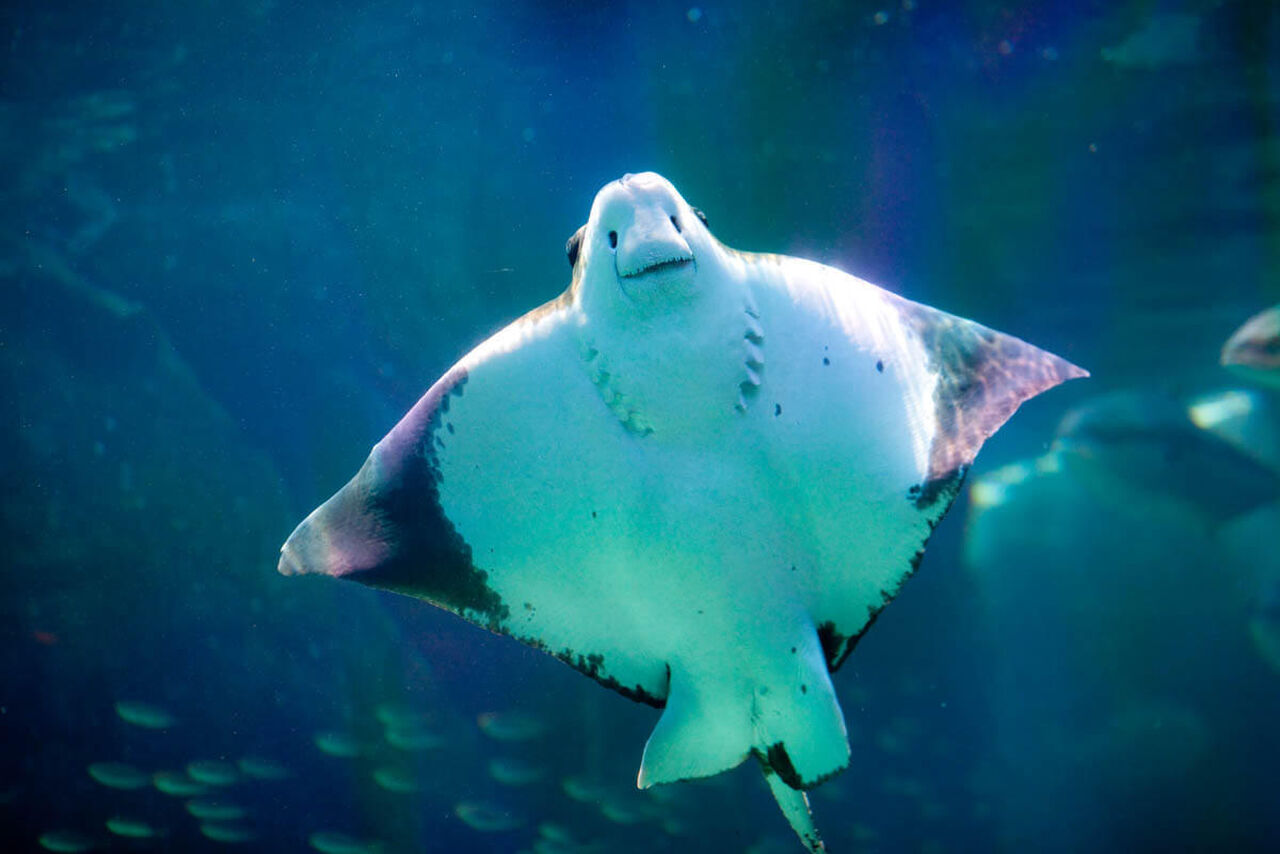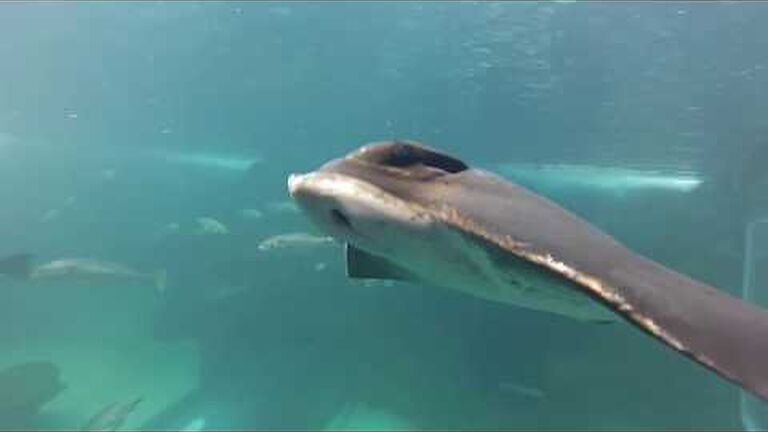Eagle rays (Myliobatis aquila) are an iconic South African marine species. Small, but charming, these rays are found along the entire length of our coastline, and range as far as the Black Sea and the African East Coast. These charismatic animals have long been a favourite of visitors - big and small - at the Two Oceans Aquarium, but how much do you really know about them?
What do they look like?
The defining characteristic of eagle rays is the shape of their fins - each fin is triangular, giving the whole animal a rhombus-shaped disc appearance when viewed from above or below. Their snouts are quite large and rounded and their tails are slender, with a small dorsal fin where it connects to the body and with a single large defensive spine.
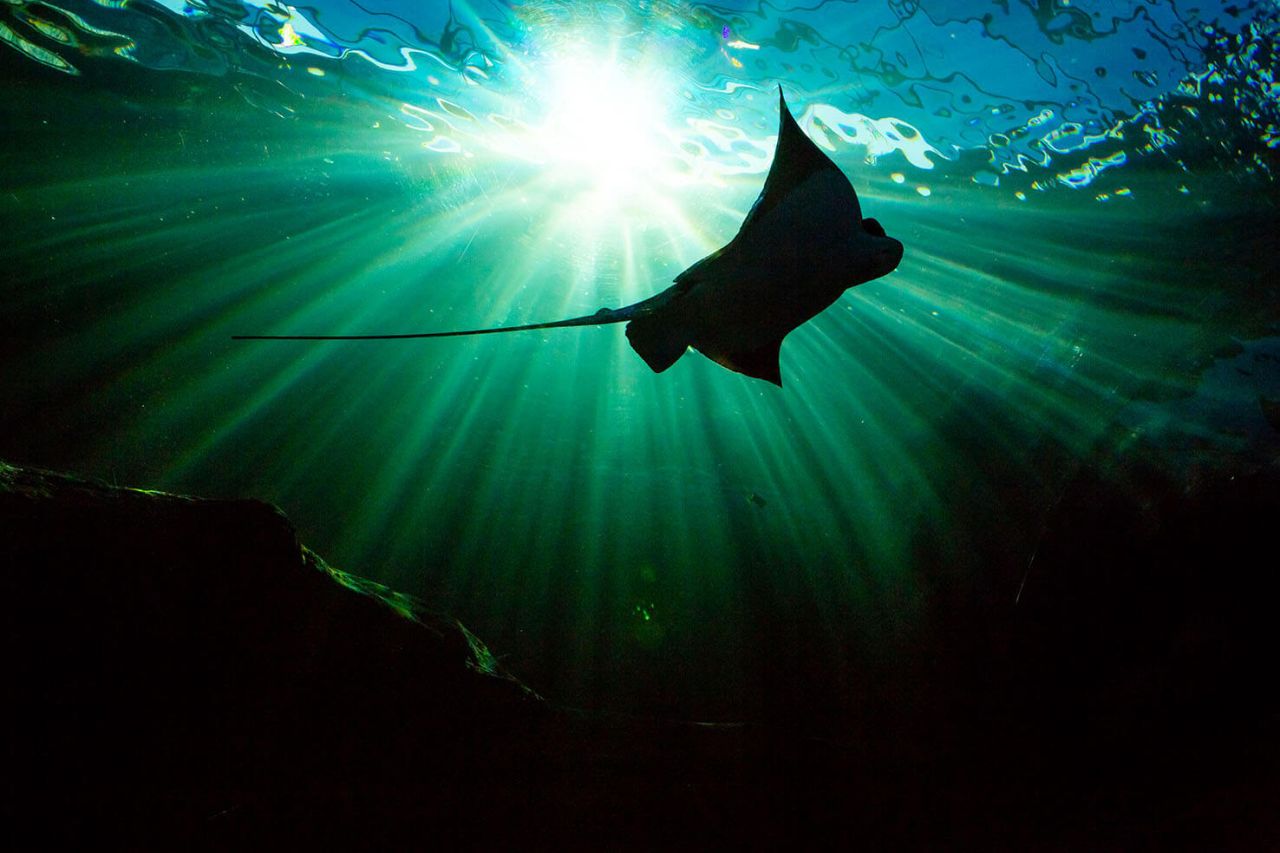
Although the eagle rays at the Two Oceans Aquarium are quite small, older eagle rays in the open ocean reach sizes up to just under 80cm across and about 2m from nose to tail tip. Eagle rays can grow to about 25kg and are known to live for over 20 years.
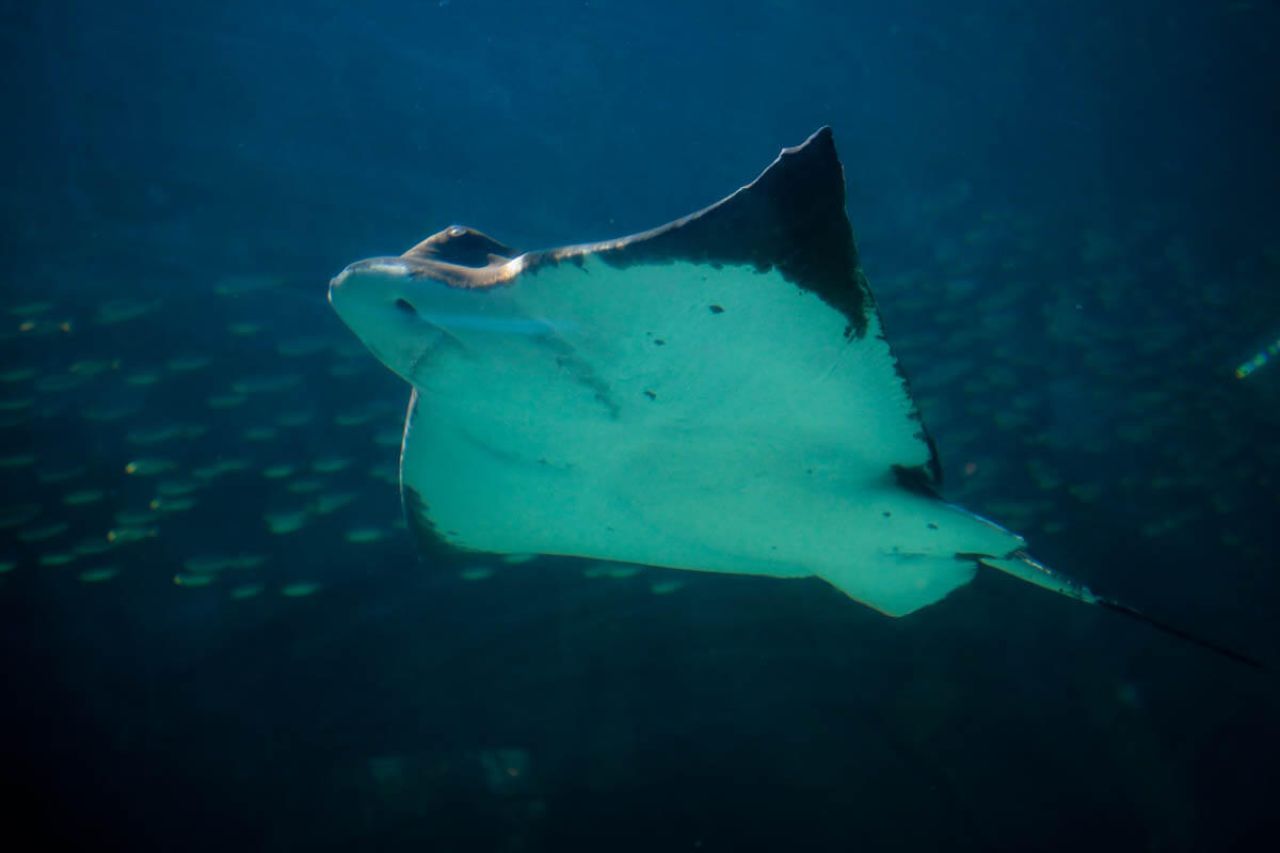
Typically, eagle rays have white bellies and black backs, but their colouration can vary depending on their habitat and some can appear very pale. This colouration serves as countershading camouflage and helps the rays blend into the seafloor.
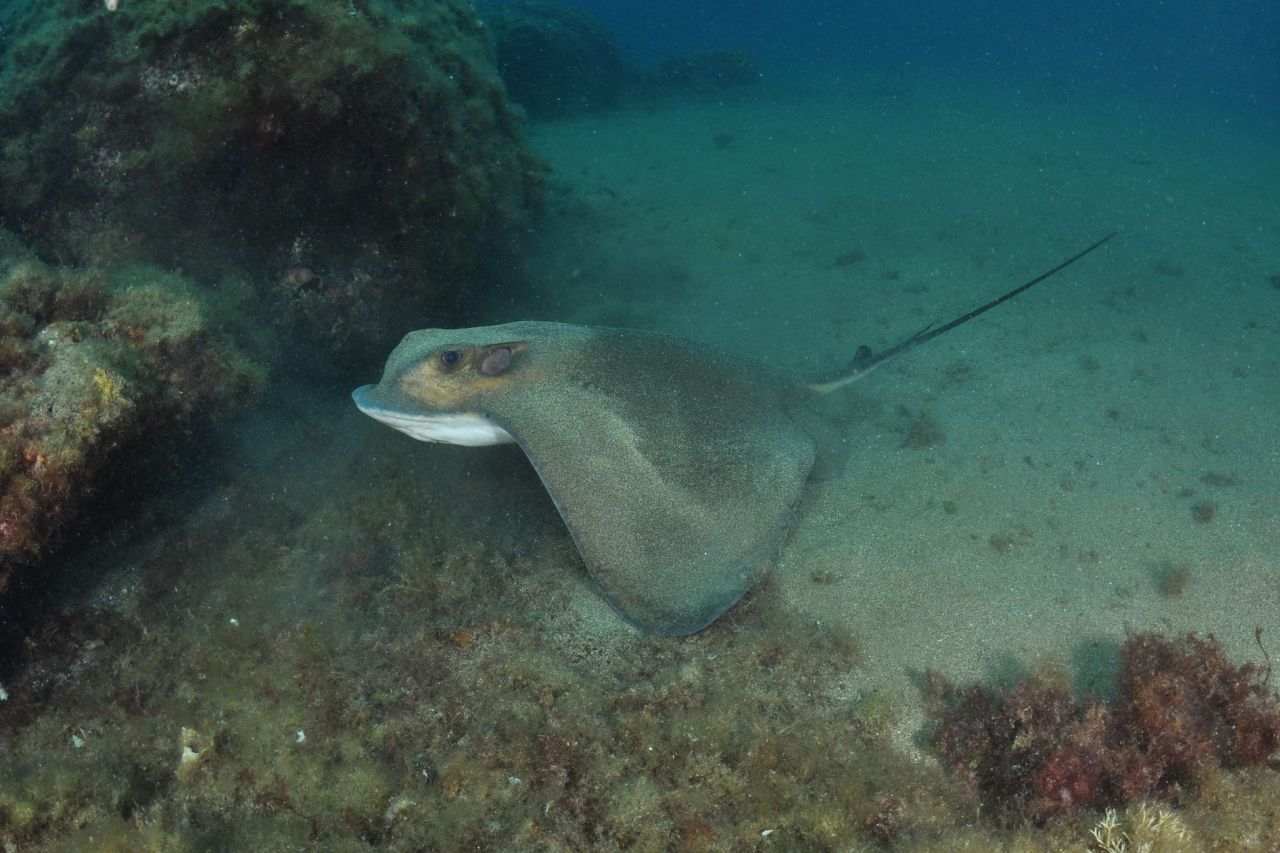
Where do they live?
The range of eagle rays stretches from the North Sea in the Atlantic, around the tip of South Africa and up the coast of East Africa to Kenya. They also inhabit the Black Sea and the Mediterranean Sea. Despite their wide range, they are most common around South Africa.
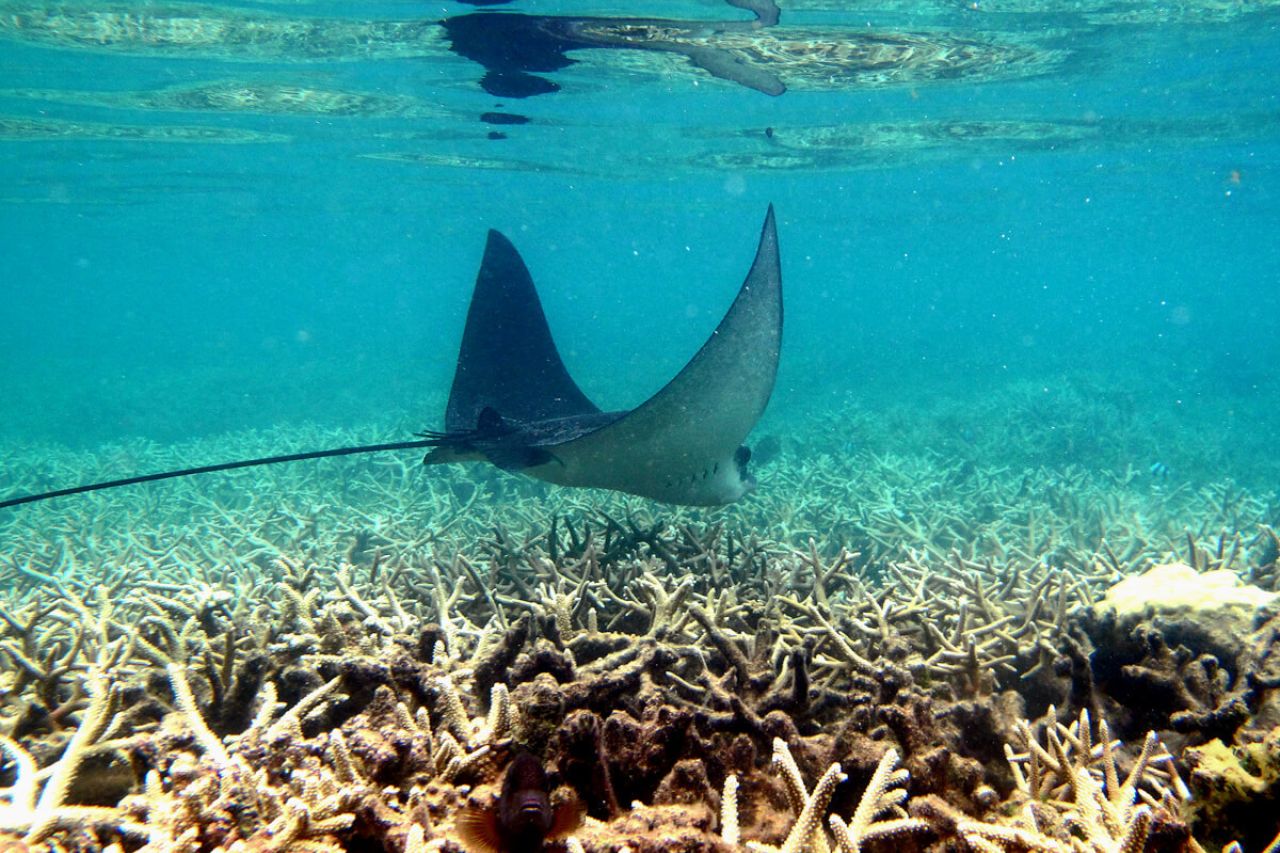
Eagle rays have been spotted in a variety of environments but show preference to sandy-bottomed coastlines where they typically prefer shallow waters less than 50m deep. However, they have been found at depths of up to 800m. Because of their preference for sandy bottoms, shallow lagoons and brackish river mouths often see large aggregations of eagle rays.
Dive with the eagle rays in the I&J Ocean Exhibit and get a ray-eye view of the Aquarium.
What animals are they related to?
These eagle rays belong to a family of fish called the Myliobatidae, which includes all other types of eagle rays and also manta rays. Rays belong to the same group of fish as sharks - animals that have cartilaginous skeletons.
Here's everything you need to know about South African sharks.
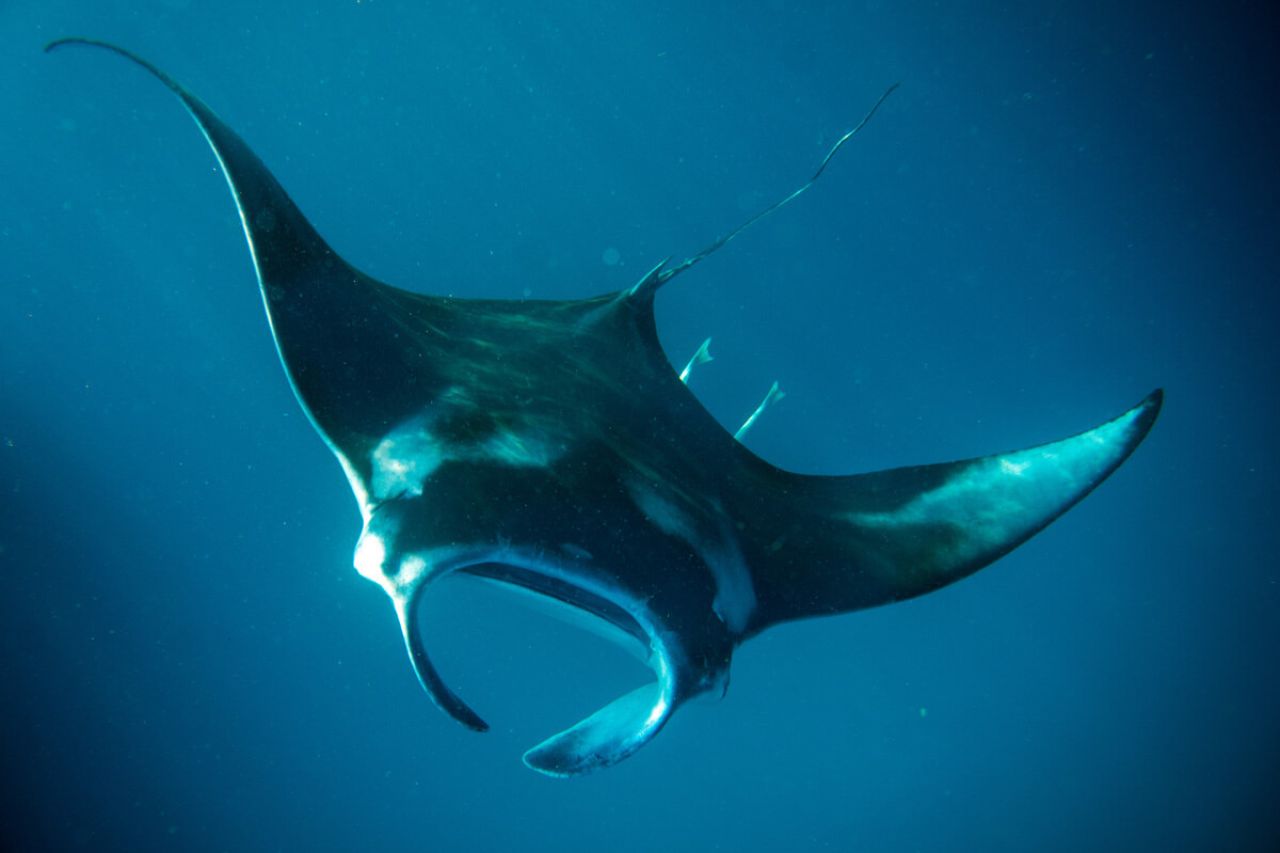
Recently, taxonomists at the IUCN have begun to wonder if all the "common eagle rays" are actually one species or not, and genetic work is being done to see if those found around West Africa and the Mediterranean are truly the same species as the ones in South Africa. These two populations do have some size and colouration differences - so it's possible the South African eagle rays may be unique.
What do they eat?
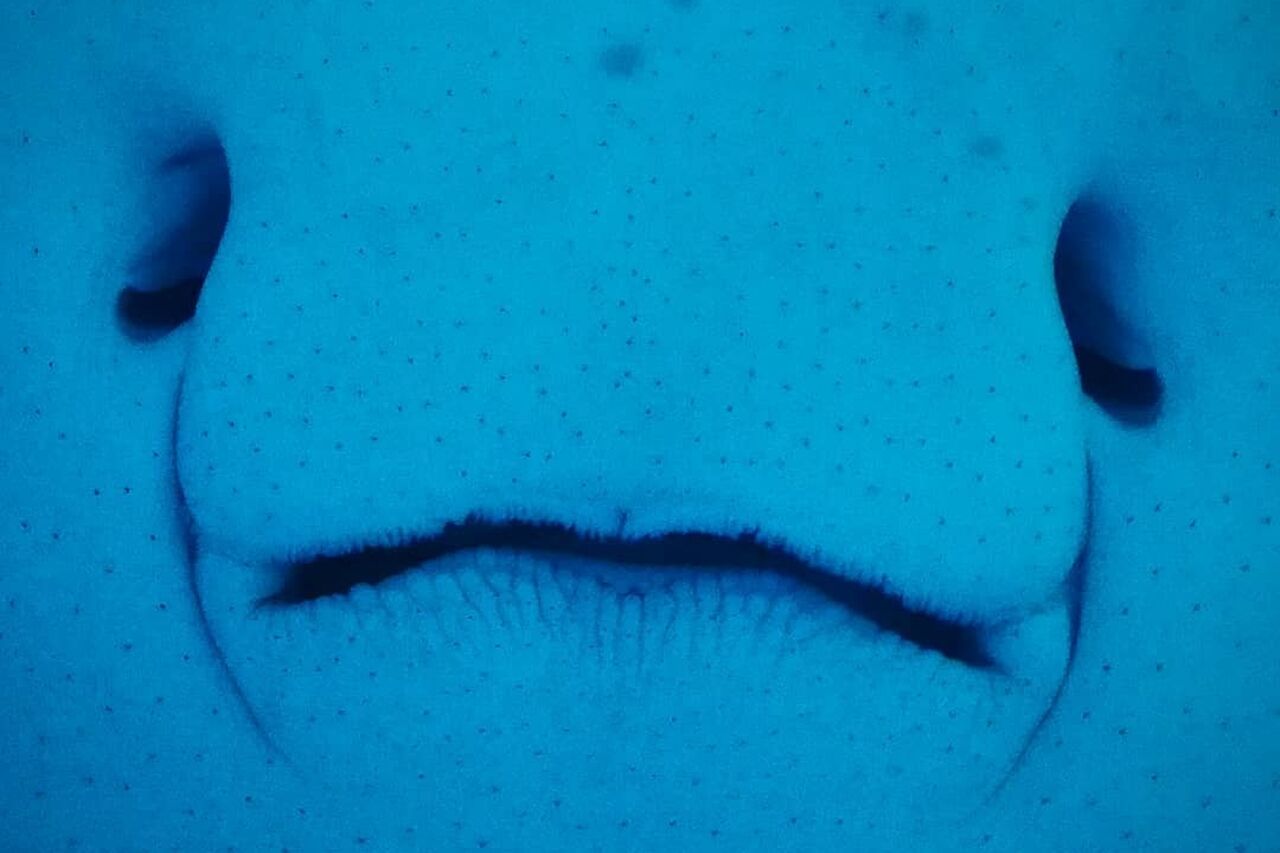
Eagle rays are predators that use sensitive organs in their snouts called ampullae of Lorenzini to detect electric signals of crustaceans and shellfish hiding on the seabed. They are also able to detect worms and snails burrowing in the sand and will eat small fish if given the chance. Instead of sharp teeth like many predators, eagle rays have jaws covered in flattened, interlocking teeth that they can use to grind up and crush hard shells.
How do they reproduce?
Eagle rays are ovoviviparous, which means that the mother keeps the eggs inside her body until they hatch. A mother eagle ray will keep a clutch of three to seven hatched pups incubated and will feed them from special glands once their eggs' yolk sacs are depleted. After about eight months, the mother will give birth to live, fully-developed young.
What risks do they face?
It is unclear how human activities are affecting eagle rays in the ocean. In the Mediterranean, fishing pressures have caused significant population drops, but surveys on South African populations show that they are not declining as a result of fisheries. However, because of eagle rays' dependence on shallow, sandy habitats, they are at risk due to coastal development and pollution of these environments.
If you love seafood and want to support fisheries that limit bycatch and don't contributing to the decline of our ocean diversity, check out the WWF SASSI Green List.

Where do the eagle rays at the Aquarium come from?
The eagle rays at the Aquarium are a combination of rays that have either hatched here, or rays that were caught as bycatch by local fishermen and given to us (we do not incentivise bycatch). Small eagle rays then go into the Ray Pool in the Skretting Diversity Gallery, a favourite exhibit for kids.
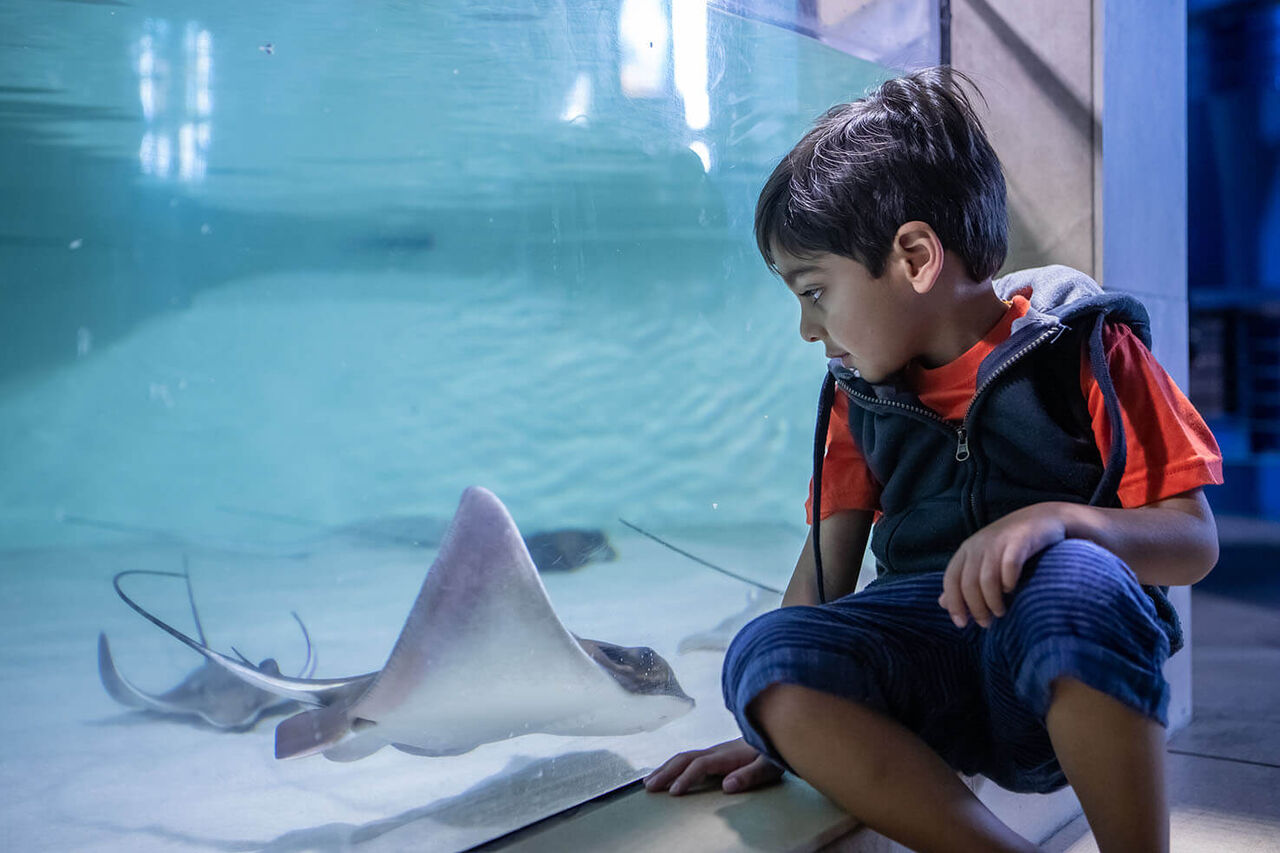
Related News
Sign up to our Newsletter
Receive monthly news, online courses and conservation programmes.
